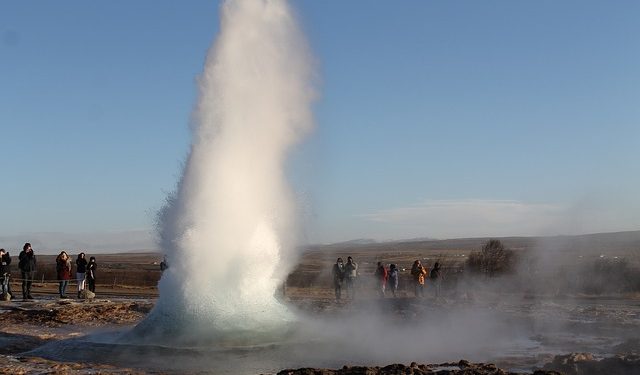A study reveals that the recently reawakened geyser at Yellowstone National Park does not indicate chances of a volcanic eruption. The sudden multiple eruptions of the otherwise sleeping geyser were taken as a sign by some scientists that a volcanic eruption was in the offing at Yellowstone National Park. However, a recent study published on January 4 in the journal Proceedings of the National Academy of Sciences dismissed such fears.
In March 2018, the Steamboat Geyser suddenly erupted, accompanied by hot outbursts of steam, mud, sand, and rocks. It was an unexpected eruption following about three and half years in which the geyser had laid dormant without any activity. That year, the Steamboat Geyser erupted about 32 times. It broke the record of erupting 48 times in 2019, replicating the same feat in 2020, according to new information from the US Geological Survey on January 4. Steamboat Geyser first set a record of 29 eruptions in 1964.
In about 70,000 years, Yellowstone has never had a major eruption, but that has not stopped scientists from continually looking over their shoulders, predicting when the next super-volcano might likely occur. Hydrothermal explosions, otherwise known as geyser outburst, is another event that is hard to tell when it might occur, but whose occurrence can claim the lives of many. An example was the geyser outburst that happened in White Island, New Zealand, in December 2019, claiming the lives of 22 people.
Michael Manga, the lead author of the recent study and professor of Earth and planetary sciences at the University of California, Berkeley, said in a statement that hydrothermal explosions are one of the biggest threats in Yellowstone. He noted that they’re particularly cautious of the difficulty which lies in predicting their occurrence. They usually erupt without prior notice or warning signs, Fox News writes.
The sudden reawakening of Steamboat Geyser was not followed by an underground magma movement that precedes a volcanic eruption. However, there were some changes with the sudden reawakening of Steamboat Geyser. The changes include an increase in the ground level around the geyser, noticeable seismic activity around the region, and an increase in the temperature around the area. However, other geysers in the area still lie dormant.
Again, none of Steamboat’s outbursts happened after high seismic activities, except that of 2018, according to findings by the researchers. While researchers cannot decipher the reason for the sudden reawakening of Steamboat, they noted that there is no evidence to suggest that a volcanic eruption is around the corner.
Investigations by the researchers found that Steamboat’s outbursts are so tall, placing it as the world’s tallest expulsion by an active geyser. Steamboat’s highly-shooting outburst is caused by the deep reservoir of water underneath the geyser. Unlike other geysers found in other places in Chile, Iceland, Russia, and the US, Steamboat has a reservoir of up to 82 feet (25 meters).
Rainfall and snowmelt are some of the other factors that may contribute to the frequency or otherwise in the eruption of Steamboat.
Source: livescience.com





